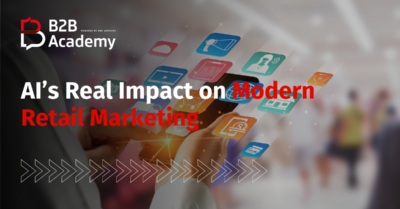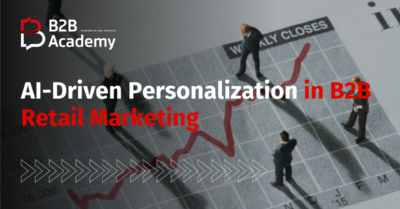For years, outbound dominated B2B sales. However, outbound’s traditional methods face scrutiny in a world increasingly shaped by buyer empowerment and digital transformation. So, what’s next for outbound sales? Can it still succeed on its own, or is a hybrid strategy the key to its survival? In this article, we’ll explore why outbound sales need to adapt by combining account-based marketing and inbound strategies and how this hybrid approach is setting the stage for the future of sales success.
Is One Strategy Enough?
The short answer is no. There’s no single strategy that guarantees success in 2024 or 2025. Buyers have changed dramatically. They demand personalization, expect quick answers, and prioritize trust over flashy pitches. Here’s what you’re up against:
- Evolving buyer expectations: Speed and tailored experiences are the norm. Decision-makers want meaningful interactions, not cookie-cutter pitches.
- Tech saturation: AI, automation, and data tools are everywhere, creating both opportunities and overwhelming noise. Cutting through requires precision.
- A trust deficit: Transparency and authenticity are in demand as buyers grow wary of generic outreach and unsubstantiated claims.
Given this environment, relying solely on traditional outbound methods is a gamble—and likely an unwise one.
ABM: Outbound, Reimagined
Account-based marketing offers a more refined approach to targeted outreach. Rather than casting a wide net, ABM zeroes in on high-value accounts, delivering tailored messages and experiences that align with their unique challenges.
Why ABM Works
- It’s specific: ABM avoids generic outreach by focusing on the nuances of a select group of accounts.
- It’s coordinated: Sales and marketing teams collaborate, ensuring consistency in messaging and tactics.
- It builds relationships: By addressing specific needs, ABM fosters trust and establishes your business as a strategic partner.
However, ABM is not a shortcut. It demands deep insights, thorough planning, and significant resources. Success lies in aligning your team and executing with precision.
Inbound Strategies: The Foundation of Buyer Engagement
While ABM offers a sophisticated approach to outbound, inbound strategies provide the groundwork for long-term engagement. By creating value-rich content and empowering buyers to educate themselves, inbound meets prospects where they are.
Key Benefits of Inbound
- Content-driven value: Blogs, whitepapers, case studies, and webinars position your business as a thought leader.
- Buyer-led journeys: Prospects engage at their own pace, reducing friction in the sales process.
- Scalability: High-quality content can drive traffic and leads over time, offering a compounding return on investment.
Despite its strengths, inbound isn’t always enough for high-touch, enterprise-level sales. These deals often require direct engagement and relationship-building, where ABM and modernized outbound methods play an essential role.
The Future of Outbound
While outbound sales may be losing its dominance, it’s far from obsolete. The reality is more nuanced: outbound needs to evolve. Instead of volume-based, transactional outreach, the focus should shift to precision and integration with broader strategies.
- Smart automation: AI-powered tools enable better personalization without sacrificing efficiency.
- Targeted engagement: Prioritize quality over quantity. Focus on accounts that align with your ideal customer profile (ICP).
- Integration with inbound and ABM: Outbound works best as part of a cohesive strategy that builds on inbound’s credibility and ABM’s personalization.
Outbound isn’t about making 200 cold calls a day anymore; it’s about meaningful, targeted efforts that complement a larger sales and marketing framework.
The Role of AI in Modern Sales
While AI won’t replace the human element of sales, it improves efficiency and decision-making in critical areas:
- Data analysis: AI helps identify trends and predict buyer behavior.
- Task automation: From scheduling follow-ups to updating CRM records, AI reduces manual workloads.
- Personalized outreach: Tools like AI-driven email assistants can craft messages that resonate on a personal level.
However, AI is not a substitute for relationship-building. Use it to empower your team, not replace their expertise.
The Future Lies in Hybrid Strategies
The key to thriving in this complex landscape is balance. Combining inbound, outbound, and ABM ensures you’re covering all bases while adapting to the needs of different buyers and industries.
1. Commit to Inbound
Inbound is the foundation for building trust and drawing prospects into your ecosystem. It’s about providing value before asking for anything in return. Try to use:
- Content that resonates: Develop blog posts, whitepapers, and webinars addressing specific pain points. For example, a SaaS company targeting CFOs might publish a report on cost-saving strategies using automation.
- Lead magnets: Offer downloadable tools or templates—such as a free ROI calculator—to capture contact information.
- SEO and thought leadership: Optimize content for search engines and guest-author articles on industry platforms to build authority.
Pro Tip: Track which types of content convert the most leads and double down on those formats. For instance, if video tutorials drive 40% of your sign-ups, prioritize video production.
2. Refine Your Outbound Efforts
Modern outbound isn’t about quantity—it’s about delivering the right message to the right person at the right time.
- Smart segmentation: Use CRM data to create segmented lists based on job title, industry, or recent activity. For instance, send tailored outreach to companies that visited your pricing page but didn’t convert.
- Hyper-personalized emails: Avoid generic templates. Instead, mention a recent company achievement or shared connection. For example: “Congratulations on your recent funding round! We’d love to discuss how our platform can scale with your growth.”
- Multi-channel outreach: Combine email with LinkedIn messaging and phone calls. For example, connect on LinkedIn with a personalized note, then follow up with a relevant article or case study before scheduling a call.
Pro Tip: Use A/B testing for subject lines and messaging. Track open and response rates to refine your approach.
3. Expand ABM Initiatives
ABM takes personalization to the next level by aligning marketing and sales to target high-value accounts across multiple touchpoints.
- Collaborative planning: Identify top-tier accounts that align with your ideal customer profile (ICP). For instance, a B2B tech company might focus on Fortune 500 firms in healthcare.
- Tailored campaigns: Create bespoke content for target accounts. For example, a custom landing page addressing a prospect’s specific challenges or a video message from the sales team introducing your solution.
- Integrated tactics: Pair outbound emails with retargeting ads and invite decision-makers to exclusive webinars.
For instance, host a webinar titled “Scaling in Healthcare: Best Practices for 2024” and follow up with personalized calls.
Pro Tip: Measure ABM success using account-level metrics like engagement rate, pipeline velocity, and deal size rather than traditional lead volume.
4. Adopt AI Thoughtfully
AI is a game-changer, but it works best when augmenting, not replacing human expertise. You can use AI for:
- Predictive analytics: Use AI tools like Gong or Clari to analyze pipeline data and identify which prospects are most likely to close.
- Automated insights: Tools like HubSpot’s CRM can suggest the best time to reach out based on past engagement patterns.
- Content personalization: AI-driven platforms can dynamically adjust email content based on user behavior. For example, if a prospect engages with a blog about compliance, your next email could automatically highlight your compliance-focused features.
Pro Tip: Use AI to streamline repetitive tasks, like data entry or follow-up scheduling, so your team can focus on strategic conversations.
5. Engaging Buyers at Every Stage
By taking a hybrid approach, you can meet buyers wherever they are in their journey:
- Early-stage prospects: Use inbound content like blogs, videos, and social posts to nurture interest and educate them about your industry.
- Mid-stage prospects: Refine outbound efforts with targeted messaging that addresses their specific concerns and invites them to learn more.
- Late-stage prospects: Lean on ABM to deliver personalized proposals, case studies, or testimonials that directly address their pain points.
The question isn’t whether outbound is dying; it’s how outbound—and sales as a whole—needs to evolve. Buyers today are better informed and more empowered than ever. Meeting their expectations requires a nuanced approach that combines the strengths of inbound, ABM, and outbound strategies.






